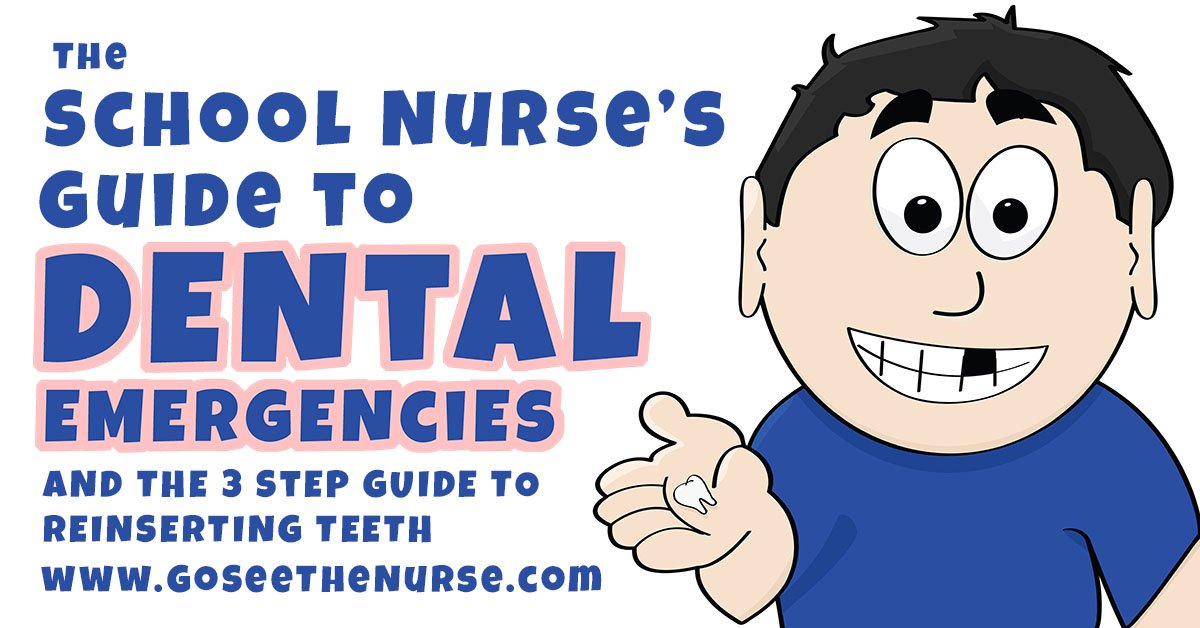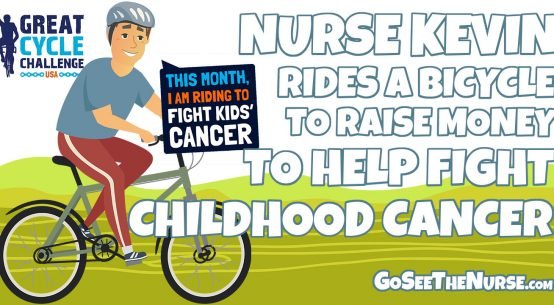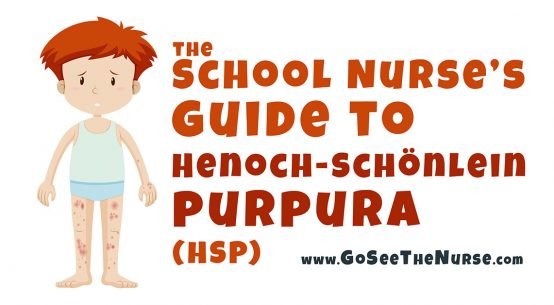
3 Steps To Putting Teeth Back In Children’s Mouths
Once upon a time there was my son…a boy now of 12 (come next week)…but a boy then of 3. This 3-year-old was bouncing on the bed we all were sitting on. “Stop that! You’re gonna get hurt (see Life is a Lawnmower)!”
“Nuh-uh!” Then POW! A second later, screaming.
This child had jumped and fallen right between the bed frame and the bedside table and was stuck up to his neck between these two pieces of furniture. Blood was pouring from his mouth, now engaged in one of those open-mouthed screaming cries where the mouth is open, but nothing is coming out.
Needless to say, his mother freaked out. I looked into his mouth and found one of his front teeth to be…well…it looked like it was broken. I searched all over the area and couldn’t find the broken part, so I assessed him again. That tooth wasn’t broken…not at all. It was impacted straight up into his gum after banging it onto the top of the bedside table. Yep…off to the ER.
While writing this first part, I had a child enter my office complaining of a “really bad toothache” with notable decay to the tooth she was complaining about.
Dental emergencies and dental “urgencies” will happen during your school year; it’s almost a given with all the little mouths that you have running all around your schoolyards. And don’t think you high school nurses are exempt…there’s football, horseplay, another student’s fist, and running around with the inevitable fall, not to mention just all around knucklehead-itis going on everywhere (1/5th to 1/3rd of all children are affected by one dental injury or another by age 12 [Krause-Parello, 2005]).
What would you do if a child came into your office holding a tooth?
“Nurse Kevin! Nurse Kevin! I lost my tooth!!” An excited child enters my health office with a fisted hand and is very excited, “I lost my tooth!” He opens his hand, “See?!”
“Lost it? No you didn’t. It’s right there.”
We school nurses know this song-and-dance, right? But what if the child with the fisted hand grasping a tooth is a 5th-grader or an 8th-grader, or even a 12th-grader? That ain’t no baby tooth that child’s holding. That’s a dental emergency. More than two million teeth are avulsed (knocked out) every year in the United States, and, more than likely, during school activities. After all, given that a child is at school from 8 a.m. – 3 p.m. with one hour of after-school functions to attend (or more), a child spends about 40 active hours a week at or around school. Dental injuries due to sports are more likely than not to occur in the after-school setting (Krause-Parello, 2005). That’s you junior high and high school Nurses!

First aid for tooth avulsion
First and foremost, if you just don’t feel comfortable with sticking that tooth back in that child’s mouth, then store the tooth in HBSS, milk, or an emergency tooth-preserving system (ETPS) and get that child, along with his / her tooth, to the dentist. But, truth be known, the best chance that child’s tooth has is to go right back where it came from…back in that child’s mouth within the first 5 minutes. If I were you, I’d try to stick it back in there. Note: Milk has been indicated by the American Association of Endodontists as the second-best solution for transport of avulsed teeth after HBSS. (Krasner P. Tooth avulsion in the school setting. J Sch Nurs 1992;8: 20–6.)
What do you do if you have no HBSS or milk? Use the child’s saliva! It may be bloody…that’s even better. Either way, don’t use water. Water is not a good idea because it has a very low pH and osmolality. It’d be better to keep the tooth dry until immediate care can be provided.
Do you have a dentist you can call? The how-to can be given over the phone by a dentist. He’ll / she’ll likely tell you to hold the tooth by the crown (the part that sticks out) and not the root (the part you’re going to stick back into the socket). If it’s dirty or has some debris (dried blood), wash the tooth for around ten seconds in HBSS or milk and leave it wet. Don’t scrub or dry the tooth’s root. Then reposition the tooth back in the socket (taking note of “heads-or-tails”…the front or the back).
If there is doubt about putting the tooth back in the child’s mouth, the tooth should be placed in a suitable storage container in HBSS, milk, or an emergency tooth-preserving system (ETPS), and the child’s parents should immediately be contacted to allow them to seek dental treatment right then (hopefully they will answer the phone *sigh*).
I know you will try, but if you can’t get the tooth back into the socket, if the child is in such emotional distress that they will not let you try, or if the damage around where the tooth was is such to where you can’t stick the tooth back in, store the tooth in HBSS, milk, or an emergency tooth-preserving system (ETPS) and control the bleeding. Take a 4×4 bit of gauze and roll it up. Have the child “bite” down on the gauze if possible to work like a pressure dressing.
How to reinsert a lost permanent tooth in 3 steps:
1) Verify the tooth is clean. If not, grab the crown of the tooth and rinse the root with HBSS or milk. If you don’t have any HBSS or milk, use clean water BUT DO NOT STORE OR SOAK THE TOOTH IN WATER. DO NOT SCRUB OR SCRAPE THE ROOT SURFACE!
2) Make sure you know what side of the tooth is front and which is back. This may be a bit harder with molars. The flat surface is usually the front of the tooth. But, I am guessing, that IF you get it in backwards, the dentist will turn it around. This “backward insertion” would have worked out as just a way to “store” the tooth in the child’s mouth and in the child’s own unique “storage container.”
3) Stick the tooth back where it was in the socket and apply sustained pressure to the tooth for 5 minutes. This will help stop / slow the bleeding and “push out” any blood behind the tooth that was in the socket. This gentle, 5-plus-minute pressure can be maintained by having the child bite down gently on a rolled-up 4×4 gauze.
If the child is old enough, you could place the tooth between the cheek and teeth (as long as you’re sure they will not swallow it). This will keep the tooth in the child’s own unique saliva and give that tooth an “organic” fighting chance. Or, simply have the child spit into a baggie or glove and store the tooth in their own saliva…bloody as it may be…to get the child and their tooth to the dentist.
Afterwards, the dentist will either find the child with his / her tooth having been replanted by an awesome school nurse, or the dentist will find the tooth soaking in HBSS or milk, or there will be a extraoral dry time / storage of less than 60 minutes or more than 60 minutes. The condition the child and his / her tooth is found in will determine the dentist’s course of action. Either way, the dentist will obtain periapical radiographs (X-ray) to verify position.
A round of antibiotics may be ordered for 7 days, and some Rx may require school-time dosing. A Chlorhexidine rinse for 1 week may also be prescribed. The Chlorhexidine rinse will likely be ordered BID and after tooth brushing. But, we school nurses may have to assist the child if the Chlorhexidine rinse is ordered TID. Note: This is a swish-and-spit kinda rinse…the child should not swallow the Chlorhexidine rinse.
Be sure to assess tetanus vaccination, especially if the reinserted tooth had been in the ground on in the dirt. The bacteria that cause tetanus can be found in soil, manure, or dust.
As far as a chipped tooth…there’s not much you can do about the “chip.” If you can find it, send it with the child. The parent may not feel the child needs to see the dentist about a chipped tooth. But, if the chip or crack is deep enough, the tooth can become infected, and the child may eventually lose the tooth. If the tooth is jagged and sharp, take a bit of unchewed sugarless gum and “pad” the sharp, broken tooth to keep the child from cutting a cheek or their tongue. But use good nursing judgment in using gum to pad.

Final thought
If a tooth is knocked out, loose, out of place, or chipped / broken, I would consider this a dual injury. If their “clock has been rung” hard enough to damage teeth, consider the injury to have the potential to have caused a concussion and assess accordingly. I know this awesome school nurse who wrote the most awesomest article about concussions. Read it here.
Terms:
Loads of dental terms: https://www.denteractive.com/dental-terms/
Periodontal ligament (PDL) – The ligament found between the root part of the tooth and the adjacent bone. This tissue allows the tooth to function like a shock-absorber under the “bumps” of the action of chewing, clenching, and grinding. (https://www.colgate.com/en-us/oral-health/basics/mouth-and-teeth-anatomy/periodontal-ligament–what-is-it-)
Dental or tooth avulsion – The complete displacement of a tooth from its socket (https://en.wikipedia.org/wiki/Dental_avulsion)
Permanent dentition – Your adult or permanent teeth makeup, (for most folks) 32 teeth. There are 16 teeth in the maxilla and 16 in the mandible. In each arch there are two central incisors, two lateral incisors, two canines, four premolars, and six molars. (https://www.dentalcare.com/en-us/professional-education/ce-courses/ce500/permanent-dentition)
HBSS – Hank’s Balanced Salt Solution – to maintain pH and osmotic balance (https://www.thermofisher.com/us/en/home/life-science/cell-culture/mammalian-cell-culture/reagents/balanced-salt-solutions/hbss-hanks-balanced-salt-solution.html)
Emergency tooth-preserving system (ETPS) (https://amzn.to/2UCaoy8)
Periapical radiograph – A dental x-ray film or dental imaging used to assess the bone surrounding the roots of the teeth (https://medical-dictionary.thefreedictionary.com/periapical+radiograph)
Links:
https://www.ncbi.nlm.nih.gov/pubmed/16262439
https://www.ncbi.nlm.nih.gov/pubmed/1576463
https://www.ncbi.nlm.nih.gov/pubmed/9855801
Loads of Dental Terms: https://www.denteractive.com/dental-terms/
https://www.deardoctor.com/dental-injuries/dental-injuries-guide2.pdf
https://www.ada.org/en/member-center/oral-health-topics/x-rays
http://www.mychildrensteeth.org/assets/2/7/RS_TraumaFlowSheet.pdf
https://en.wikipedia.org/wiki/Dental_avulsion
https://www.dentalcare.com/en-us/professional-education/ce-courses/ce500/permanent-dentition

School year is almost done; 42 days (including weekends) before our school year comes to an end. Will Nurse Kevin post during the summer?? You’ll have to see what Nurse Kevin does all summer by signing up for Nurse Kevin’s Non-Spammy, No-Spam Newsletter.
Your information is kept private! Here’s my Privacy Statement.



